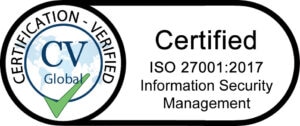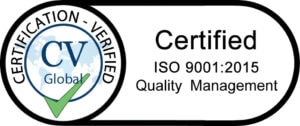3 Things to consider for minimising disruptions from remote working.
Many industries such as Field Services, and Transport and Logistics have mobile workers who are out on the field and require constant connectivity with the rest of the business. While businesses are set up for managing their mobile workers effectively, many companies aren’t ready for their office based staff to be working remotely.
The COVID-19 outbreak has caused businesses to encourage remote working for all employees. However, if the business does not have a solid remote working strategy in place with all the necessary tools, then it could lead to a severe negative impact to productivity. To help support your transition to remote working and ensure a productive work environment, we have created a list of things for your business to consider.

Internet
The first thing to consider is internet availability. It is safe to assume most employees will have some access to the internet at home or elsewhere, but you cannot guarantee the speed and reliability of their connection is suitable for their work – especially for those working from more rural areas.
You should identify the necessary bandwidth required for your employees’ optimal productivity. Not all employees have the same internet requirements; those who regularly use data intensive applications such as video conferencing have higher requirements than those who don’t. Then follow this up by gathering information from your remote workers about the status of their internet connection and considering whether it is suitable. It is worth considering mobile data plans and temporary Wi-Fi devices for those with unsuitable internet access or as a business continuity measure.
It is also important to consider a virtual private network (VPN) for maximum security when working remotely. A VPN allows you to share and access work data more securely, so it is important that employees have them installed on their remote devices and know when to use the VPN.
So make sure to:
- Identify required bandwidth for work tasks.
- Gather information on employee internet status and take stock of which employees need improved internet solutions.
- Consider whether security measures such as VPNs should be put in place.
Devices
Bring your own device (BYOD) vs corporately-owned devices has been a common topic of contention with both sides having valid arguments. Here’s an article on the five critical questions to ask when deciding the best approach for your company. Although BYOD is cheaper and easier to roll out, the devices may not be suitable for the work needed or there can be security implications – for example if an unauthorized user gets hold of the device.
If your company does employ BYOD for remote workers, make sure the devices being used are capable of doing everything they need to do. If your employees’ devices aren’t suitable you could consider renting or leasing equipment. And if you decide that the BYOD strategy isn’t right for you, you could buy mobile phones, laptops, printers, and a host of other devices that can facilitate remote working – it doesn’t need to be expensive as there are more affordable options like refurbished or, if you purchase from us, we can arrange a “buy now, pay later” agreement.
What devices are needed? Typically, one smartphone and one laptop or tablet with a webcam should suffice. If your business uses Samsung Galaxy phones, then it could be as simple as using Samsung DeX application to connect your phone to your other devices like your TV or a monitor. Your business needs will dictate what devices to be sourced.
You next steps are:
- Decide whether BYOD or corporately- owned devices are best for your business.
- Take stock of what devices are currently being used and whether they can perform all tasks needed.
- Decide what additional devices are needed for the business and consider where you can source them.
Keeping Connected
Today’s businesses depend on teamwork and inter-departmental collaboration, and remote working may seem like a threat to this way of working – but it doesn’t have to be that way. Staying in touch with remote workers has never been simpler, with tools like Google Meet, Microsoft Teams, Facebook Workplace, and Slack.
Using these tools, you can easily share documents, create team chats, and communicate with instant messaging. On top of that, you can still use all your normal communication channels: emails, phone calls, and conference calls.
Transparency on tasks and workload is important when remote working and it keeps everyone feeling informed. Try using some simple project management tools, like Trello, to show progress on work. For collaboration during remote meetings, we love Miro – the collaborative whiteboard tool.
Further still, new innovative technologies are continuously being developed to facilitate remote working – for example, augmented and virtual reality tools are becoming more accessible and affordable. In the future, these devices could be used to develop virtual workspaces or boardrooms. Software like Rumii and MeetinVR are already being developed to use these devices to create an office atmosphere and help shorten the distance between remote workers.
Our Final Tips are:
- Invest in collaboration tools that can help keep your workforce connected.
- Continue to use traditional communication channels.
- Monitor your team’s work with project management tools.
- Keep up-to-date with the latest innovations that can help improve remote working.
Our thoughts are with all the businesses and individuals who are impacted at this difficult time. We will be happy to support you with any tech needs to ensure you have all the right hardware, software and connectivity solutions in your business. We work with many mobile workforces and will be sharing insights on how to manage your mobile teams and keep disruption to a minimum.












